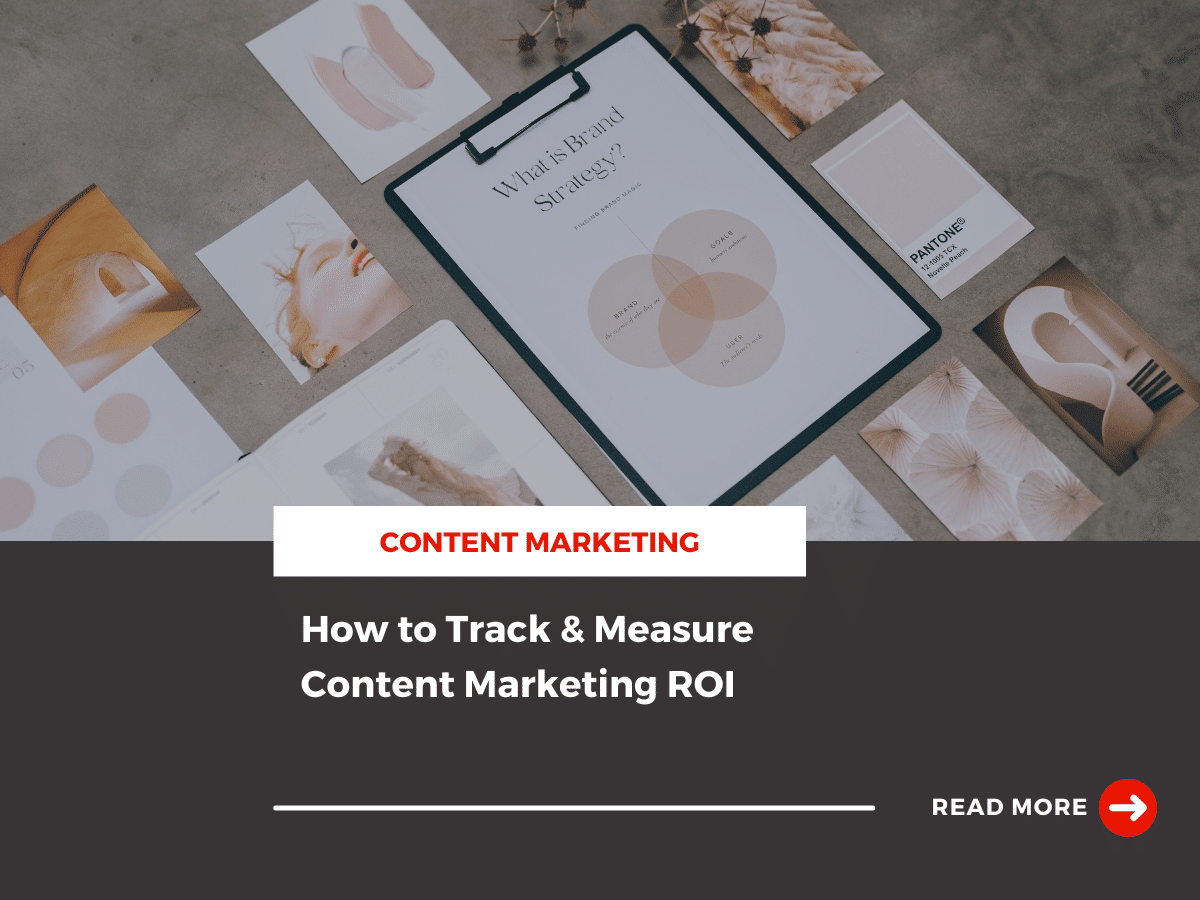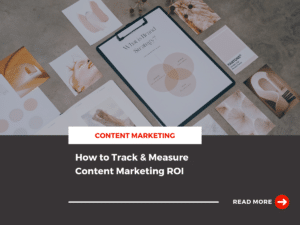All the blogs, landing pages, social media posts, and emails you create take time and careful consideration. To see success, you must take a strategic approach and focus on writing content that appeals to your target audience. While working on your content marketing strategy and brainstorming innovative ideas, there may come a time when you wonder… is content marketing actually worth it?
The short answer is yes.
Even though content marketing doesn’t deliver an instant return on investment, the content you create lays the foundation for the rest of your marketing strategy.
We created a guide to help you track, measure, and better understand your content marketing ROI. With the right KPIs and metrics, you can build a content marketing strategy that complements your bottom line.
What is Content Marketing ROI?
Content marketing ROI is the profits your brand receives for the content marketing you produce. You would calculate your content marketing ROI the same way you would for any other marketing activities. You’ll look at the profits and the expenses that went into your marketing efforts. Understanding your content marketing ROI will allow you to allocate your marketing budget more effectively and find new opportunities to grow your strategy.
Guide to Calculating the ROI of Your Content Marketing Strategy
Tracking your content marketing metrics is simple and can be done in a few easy steps.
Here’s how:
Step One: Understand the Creation Cost
To understand your content marketing ROI, you first need to know the cost of the investment. Start by looking at the costs associated with your content marketing strategy.
For example, if you wanted to calculate the expenses associated with your blog content, you’d need to look at the cost for:
- Keyword research
- Graphic design
- Writing and Editing
- On-page SEO and optimization
Step Two: Consider the Distribution Cost
Next, you’ll need the cost of distributing and promoting your content. Whether it’s paid advertising, email marketing, or simply posting on social media. You’ll also want to include any software, subscriptions, or automation tools you use.
Step Three: Calculate The Revenue
Now, it’s time to calculate the revenue from the content marketing you created. Here are a few tracking tactics you can use to simplify the process:
- Create thank you pages for purchases tied to campaigns
- Setup UTMs and other tracking parameters
- Setup Google Analytics goals or events
Step Four: Calculate the ROI
Once you have your cost and profits, you can plug everything into the following formula:

The answer to this equation will give you your total content ROI. You can also use a free online ROI calculator like the one found here.
Keep in mind: It’s okay if the number is more of a ballpark calculation. Since it can be relatively challenging to calculate the total revenue and cost for all your content marketing initiatives.
Four Content Marketing Metrics to Follow
Your content marketing ROI isn’t the only metric you should use to measure your success. Here are five content marketing KPIs to keep an eye on:
1. Search Engine Visibility
Your search engine visibility helps you determine the success of your search engine optimization strategy. If you cover compelling topics, use the right keywords, and focus on optimization tactics – your content will slowly climb the search rankings. The best way to track improvements in search engine visibility is to focus on three content metrics.
- Click-Through Rate: The higher you rank, the more conversions you should see for your CTAs.
- Ranking Position: Your ranking position is where your content currently ranks for the keywords you use. Anything that ranks in the top 10 is considered a good ranking position.
- Visibility Score: Your visibility score is a combination of your rankings and the current search volume for the keywords you rank for. This metric includes your keyword ranking, search volume, SERP features, number of keywords, and your competition.
2. Brand Awareness
Content marketing helps increase organic traffic and improve brand recognition. To gauge the success of your content marketing strategy and how it increases your brand awareness, you can track these three content metrics:
- Organic Traffic Growth: Content marketing should help your website rank higher and slowly increase organic traffic. If you have a steady increase in organic traffic to your website, it’s a key indicator that your content marketing is working.
- Impressions and Clicks: You should keep a pulse on the impressions and clicks you receive for all keywords incorporated into your strategy. With tools like SEMrush, you can track these metrics to see how familiar your audience is with your brand.
- Referral Traffic: Referral traffic refers to traffic from various online channels. The more traffic you receive from other platforms, the more interested web visitors are in your brand.
3. Web Traffic
A steady increase in web traffic means your content marketing strategy is working. Tracking your web traffic is vital to the success of your overall marketing strategy and will provide insights into what pages on your website are performing well and which ones aren’t. There are a few different content marketing KPIs you’ll want to keep a pulse on when tracking web traffic.
- Page Views: This content metric shows you the overall number of visits your website receives for any time period.
- Unique Visitors: This metric looks at how many individuals visit your site, no matter how many times they have viewed it. This will help you gain a better understanding of your reach and influence.
- Bounce Rate: This is a percentage of how quickly web visitors leave your site after viewing a page. If you have a high bounce rate, it may indicate that it was an accident, which means your audience isn’t as engaged as you thought.
4. Backlinks
Backlinks help you establish domain authority and increase brand visibility. The more high-quality backlinks you have, the better it looks to search engines. If your content brings quality backlinks, it will improve your online reputation over time.
To track your backlink success, you’ll want to use an SEO tool like SEMrush. This platform has custom data dashboards that include all the information you need for your backlink success.
You can also follow the following content metrics:
- Referring domains
- Total number of backlinks
- Anchor text distribution and relevancy
- Number of lost vs. gained backlinks
Improve Your Content Marketing Strategy With Kanbar Digital
A strategic, well-thought-out content marketing plan is vital to your success with digital marketing. Every blog you write, email you send, and landing page you optimize can help generate revenue and help you grow your online presence.
At Kanbar Digital, we’re here to help you fine-tune your strategy to meet your customers’ needs. From keyword research to content development – we’re here to help every step of the way.
Contact Us Today to Learn More
FAQs about Content Marketing ROI
What is ROI in content marketing?
ROI is the return on investment of your content marketing initiatives. It’s how much you will profit from the content you create.
What is a good ROI for content marketing?
A good ROI will vary depending on budget, industry, and content marketing costs. On average, a 5:1 ratio is a solid ROI to strive for.
How long does it take for content marketing to show ROI?
Most content marketing initiatives don’t show an instant ROI. It can take roughly four to five months for a great blog to rank in the SERPs or for the content to increase brand awareness.
What is the 4 1 1 rule in content marketing?
The 4 1 1 rule is a guide to help you improve your social media content strategy. This rule says that for every six posts you create, four should aim to entertain or educate, one should be a soft sell of a product or service, and one should be a hard sell. You can use this rule for any content you create for email, social, or web.




